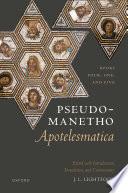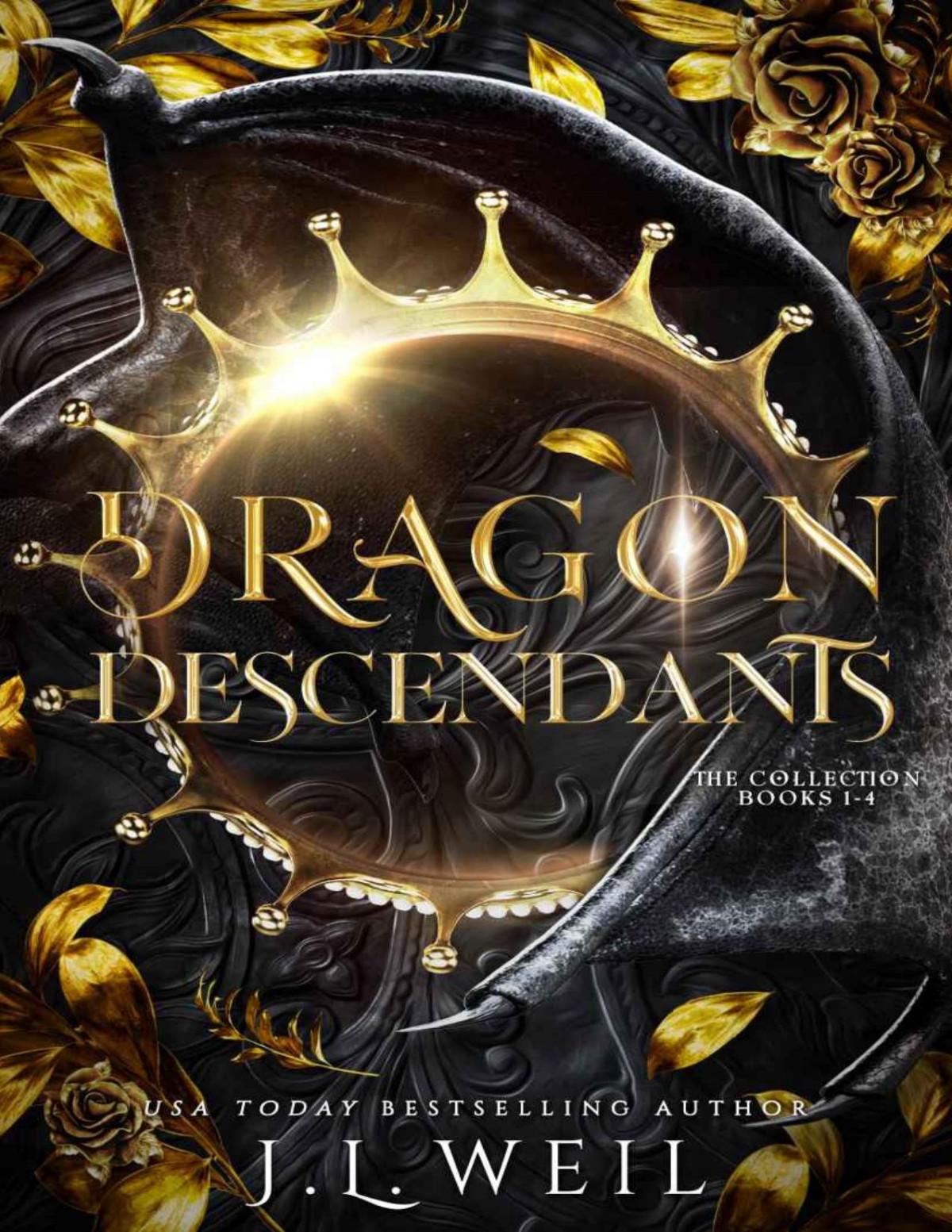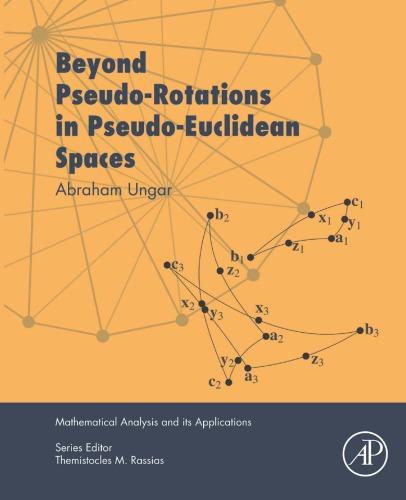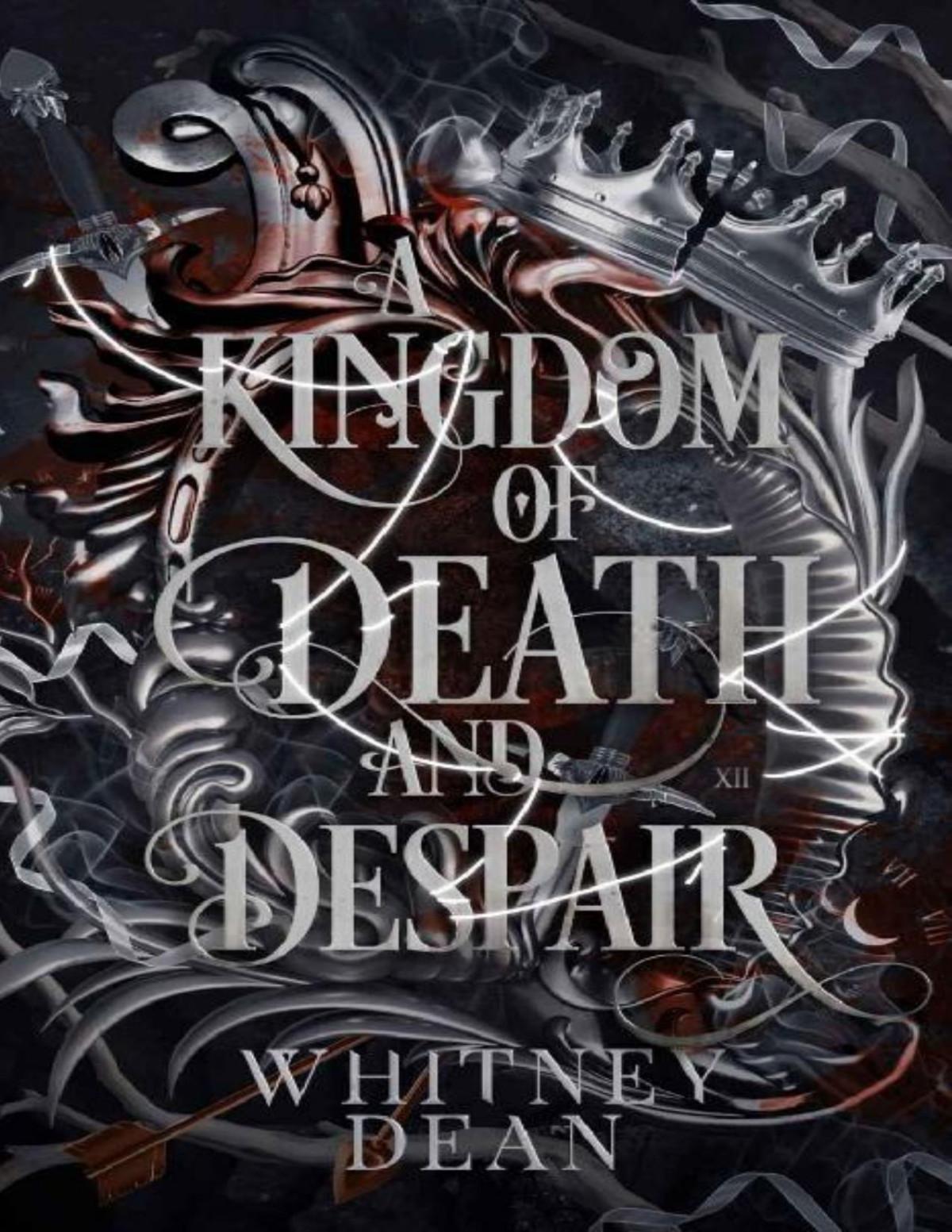Pseudo-Manetho, Apotelesmatica
Books Four, One, and Five:
Edited with Introduction, Translation, and Commentary
J. L. LIGHTFOOT
Great Clarendon Street, Oxford, OX2 6DP, United Kingdom
Oxford University Press is a department of the University of Oxford. It furthers the University’s objective of excellence in research, scholarship, and education by publishing worldwide. Oxford is a registered trade mark of Oxford University Press in the UK and in certain other countries © J. L. Lightfoot 2023
The moral rights of the author have been asserted
All rights reserved. No part of this publication may be reproduced, stored in a retrieval system, or transmitted, in any form or by any means, without the prior permission in writing of Oxford University Press, or as expressly permitted by law, by licence or under terms agreed with the appropriate reprographics rights organization. Enquiries concerning reproduction outside the scope of the above should be sent to the Rights Department, Oxford University Press, at the address above
You must not circulate this work in any other form and you must impose this same condition on any acquirer
Published in the United States of America by Oxford University Press 198 Madison Avenue, New York, NY 10016, United States of America
British Library Cataloguing in Publication Data Data available
Library of Congress Control Number: 2022950537
ISBN 978–0–19–286847–3
Printed and bound by CPI Group (UK) Ltd, Croydon, CR0 4YY
Links to third party websites are provided by Oxford in good faith and for information only. Oxford disclaims any responsibility for the materials contained in any third party website referenced in this work.
In memoriam
NMS
Das Gras ist verdorret und die Blume abgefallen.
Preface
John Ma once floated the idea of writing an article about Louis Robert’s unwritten articles, the countless ones he promised but never published. And then he never wrote it. Words like ‘I hope to return to this in a future article’, or even ‘see x, forthcoming’, are more often than not ominous, though it usually takes twenty frustrating minutes of searching to confirm that the promised work never appeared. Here, however, is the fulfilment of the promise in the preface of my first volume. I found the Manethoniana so absorbing that I could not leave them before working through the whole corpus.
I did not, in truth, expect to find the second half as enticing as the first. I was expecting catastrophic disorganisation and frustrating impasse. In fact, what I found was even richer and more rewarding than in the first volume. It is no exaggeration to say that I have not spent a single minute working on the Manethoniana when I have been anything other than completely absorbed, and usually enthralled. I do not apologise for the length of the commentaries. Had these texts been newly discovered they would have generated a good deal of attention once scholars realised how rich their implications were, into how many areas they reached. I have provided a slightly modified version of my usual form of commentary. The first part takes on the social and cultural dimension (an expansion of vol. i, part III). The second turns to the texts themselves, following the convention established in the first volume that the poet of books 2, 3, and 6 is referred to by shorthand as Ma, of book 4 as Mb, of book 1 as Mc, and of book 5 as Md. I first present the main comparanda (~ i. I.5), then discuss matters of composition and style that allow the various poets in the corpus to be compared and quite clearly distinguished one from another. Finally, there is a detailed treatment of the language and style of book (~ i. II, carried out on a small scale for each book). The third part is the edition and translation of the new material, and the fourth is the commentary. For each book I provide what I call a Pinax, which for ease of reference tabulates the charts in each book against their main comparanda. The critical apparatus also contains a lower register in which the most important of the comparanda are printed in full, again for ease of comparison.
Because they are so rich and so little-read they are in many ways a commentator’s paradise. They are infinitely granular and crowded with detail.
A literary scholar is always delighted when the opportunity arises to use the work of Louis Robert. They know that their response to a text will be enhanced by the demonstration that its details are not whimsical at all, but embedded in ancient usage which he so meticulously documented. With the Manethoniana it is a constant pleasure to be able to show how closely they tie in with the evidence, not only of other literary genres (epigram and satire and invective and curses and invocations and hymns), but also of other media. It has been a particular joy to be able to show that they can be used to shed light on ancient cultures with the same degree of intimacy, precision, and bright colour that Robert elicited from the inscriptions of Lycia and Pisidia and Caria. There are specialist terms and trade names and titles and honorific formulations demanding a context, and of course they are packed with problems of interpretation as well, which it is the task of any responsible commentary to tackle. One line calls for comment on a problem of Homeric interpretation. The next line sends one off to the Radcliffe Science library to elucidate ancient embryotomy or the prevalence of leprosy or some particular problem of ecliptic longitude. I quote a colleague, who puts it exactly: ‘Writing a commentary is very, very enjoyable I like the combination of sustained focus on a single text and the huge variety of things one always needs to be thinking about’ (Barney Taylor, Twitter, 29 March 2021).
At the same time—and precisely for many of these reasons—this project has prompted particularly acute reflection on the philosophy of commentary. Why do commentaries have the conventions they do, and why do we retain so many of them in a digital age when not all of them have retained their usefulness?
To begin with, any commentator has to think hard about narrative voice.1 The genre tends to elicit a magisterial quasi-neutral informativeness—which, if it does, should give immediate pause for thought, as should the mindless bulk of bibliographical virtue-signalling. On the other hand, the Manethoniana are so full of uncertainty that one can often only make reasonable inferences and best guesses. How many times did I find myself having recourse to ‘presumably’, and disliking it intensely? In practice the narrative voice is required to steer an unsteady course between the Scylla of quasi-certainty and pseudo-authoritativeness and the Charybdis of barely concealed admission of defeat. Every assertion, every caution, every doubt, is a matter of what the evidence can be pressed to say, and this, too, is something a commentator, any commentator, has to think hard about. What are acceptable standards of evidence? A commentator talks of numbers of occurrences and parallels, and makes another uneasy choice, this time between
1 C. S. Kraus, ‘Introduction: Reading Commentaries/Commentaries as Reading’, in R. K. Gibson and C. S. Kraus (eds.), The Classical Commentary: History, Practices, Theory (Leiden, 2002), 1–27, at 4–5.
hand-waving ‘often’, ‘common’, ‘frequently’, and a list of loci which any searchengine can generate.
There is more. There are problems of quality, of assortment and consistency and coherence. The commentator is trained to find parallels, establish contexts, and present as multi-dimensional and adequate an account as she can. But an ancient morsel presents itself for which parallels are scattered and of variable quality. The commentator tries her best, but all she ultimately achieves is the ahistorical and decontextualised accumulation of little bits of stuff.2 As Keith Hopkins and Mary Beard put it:
This is a trap modern students of Roman culture often fall into: pick up one reference in a letter written in the first century ad, combine it with a casual aside in a historian writing a hundred years later, a joke by a Roman satirist which seems to be referring to the same phenomenon, plus a head-on attack composed by a Christian propagandist in North Africa; add it all together and—hey, presto!— you’ve made a picture, reconstructed an institution of ancient Rome.3
Fortunately there is a possible response to this. One can suggest that the patient accumulation of data, properly controlled within an appropriately robust framework, serves to establish patterns beyond localised instances.4 One may not have reconstructed an institution of ancient Rome, but one has found repeated evidence of an attitude, the persistence of a topos or cultural pattern. And that is particularly important for astrology, whose contents usually (genitures apart) cannot be dated because astrological texts inveterately repeat each other with a few localised tweaks and updates which effect no more than cosmetic changes, but which in principle are all about norms and archetypes and replicability. Hence the difficulty when Cumont claimed that this or
2 Norman Maclean, Young Men and Fire (Chicago, 1992), 262: ‘Unless you have some good idea of what you are looking for and how to find it, you can approach infinity with nothing more than a mishmash of little things you know about a lot of little things.’ See also C. A. Kraus and C. Stray, ‘Form and Content’, in iid. (eds.), Classical Commentaries: Explorations in a Scholarly Genre (Oxford, 2016), 9, on the ‘Wunderkammer’ effect of commentaries.
3 K. Hopkins and M. Beard, The Colosseum (London, 2005), 70.
4 Morgan, 38–9: ‘The picture which will develop will derive cumulatively from thousands of individual references in literary sources, inscriptions, and papyri, and on coins. This kind of survey has both advantages and risks. Its main risk is that it puts side by side, as in some sense comparable, passages from very varied texts and objects, without doing full justice to differences of context, author, genre, or audience which may affect their meaning. Its main advantage is that, carefully handled, it allows one to see beyond the immediate contexts of texts and objects, the imaginations of individual authors, and the demands of genre, to assumptions and habits of thought which are shared between texts, objects and their audiences, and arguably among populations more widely. The historiography of mentalités depends on the possibility of detecting such patterns of thought and assumption, and some qualities of the evidence give us confidence in doing so . . . The sheer breadth of material we will survey also acts as a control on individual examples.’
that detail reflected life in Ptolemaic Egypt. But if one is documenting attitudes and manners and cultural patterns the chronological range of the cited material is less problematic, and the geographical range becomes an interesting artefact in its own right if it turns out that details in the presumably Egyptian Manethoniana find their best parallels in the epigraphy of Anatolia. It becomes less of a desperate attempt to solder x onto y, and more of an interesting reflection on the standardisation of public and private discourse across the Roman Near East.
What needs most reflection of all is antiquarianism. The Manethoniana are full of notaries and sewer workers, graving tools and Roman brickwork, sponge-divers and caulkers of ships, birthing stools and nails for crucifixion, acclamations and—since there is nothing astrology does not have a bearing on, even the ancient smellscape—rotting fish. Suppose one is absorbed by the detail, which after all not many literary texts offer in anything like this plenitude. Suppose one sets out to provide a little exegesis of each topic. At best, you have come up with something that Daremberg–Saglio did so much better over a century ago. At worst you have walked into a nightmare Prussian seminar:
As you see, gentlemen, the porter shut the gate [on Socrates and his companions].
At this passage anyone would be struck by the question of how this gate was constructed, and also by the important, still unsolved problem of door-shutting in antiquity.5
Can one be true to the text’s granularity without being sidetracked into footling antiquarianism? Are we so mesmerised by the ancient world that it is a sacred duty to explore even the most sapping banality? Once again, one presumably can mount a vigorous response to this. It is up to us as critics to show how and why something matters, what it implies for social or economic or political or institutional life, or for the Greek language, or for literary culture, or whatever; the onus is on us to find that enlightening moment, and if we fail it is our fault; no-one calls Robert an antiquarian. But about the granularity itself? Is that a blessing or a curse? The answer to the tweet I mentioned above was thought-provoking. On the pleasure of commentary-writing the correspondent, David Scourfield, tweeted back: ‘In all sorts of ways—not least, not having to worry about an overarching argument! . . . And one learns about all sorts of interesting things in the process, even if some of them can’t be pursued very far.’ Is it enough just to be interested or interesting? Should a commentary be a collection of morceaux, even (especially) if that is the character of the
5 Ludwig Hatvany, Die Wissenschaft des nicht Wissenswerten (Ein Kollegienheft, 2nd edn, Munich, 1914), 14, cited by A. Grafton, ‘Prolegomena to Friedrich August Wolf’, Journal of the Warburg and Courtauld Institutes, 44 (1981), 101–29, at 101.
commented text? Should we not in fact worry very much about the lack of an overarching argument?6
All my commentaries are deliberately half exegesis and half extended discussion, and the two halves are integrated into one another, or at least an effort is made that they should be. In this case, the commentary also makes an effort to highlight certain running themes (sources and models, the use and poetic abuse of astrological vocabulary, the adaptation of Homer and the creation of a hybrid idiom, and so on). But the particular subject-matter in this case happily facilitates a novel and more interesting answer to the challenge of what a commentator is doing, line by relentless line. For a commentary answers to the nature of astrology; it understands its character as bricolage and turns its liabilities into advantages. One might in general feel distinctly sceptical about the rationale for accumulating parallels in commentaries, which is what the genre is all about. What earthly conclusion is one supposed to draw from the fact that x is more, or less, like y or z in another text? But it so happens that astrology is well placed—almost uniquely well placed—to defend itself in this regard. The heaping-up of parallels demonstrates precisely what it is, the accumulation of commonplaces. It has to appeal to common experience; that is its whole point. And the sources of those parallels, all the way from the Homeric poems to semi-digested Hippocrates to curse tablets, help us to place it, and in the present case to measure the cultural range and competence of the readers of the poems on which I have commented.
Suppose we consider what else was going on in intellectual life at the time our texts were produced, which I take to be the high to later empire, the second to fourth centuries ad. Suppose, in particular, we compare and contrast it with the Second Sophistic, when the high literary culture of élites took its inspiration from what were now acknowledged as the classics. The first part of this book will propose viewing astrology as an imaginary, a collection of tropes. Instead of full-on intellectual engagement with the grand genres of drama, historiography, rhetoric, and philosophy, one could instead suggest that it is a poor-man’s version of that, a rag-bag of motifs, not underpinned by any thought-through ideas (or barely digested at best); that cultural capital is sourced, not from reworkings of Thucydides and Demosthenes, but from second-hand attitudes and platitudes about cleanly conduct and domestic decency; that instead of reworking big political themes about politics and agency and identity, astrology retreats from the grand stage of the polis and public conduct and the role of the citizen to petty day-to-day concerns about
6 J. Ma, ‘Black Hunter Variations’, PCPS 40 (1994), 49–80, at 75 ‘. it just plows through the text and tackles problems in an inert, atomistic fashion, lemma after lemma it does not have a strong line of argument and does not stand or fall with a conclusion’.
individual coping; that instead of even trying to engage in big debates about the nature of goodness, it just shrugs and passes responsibility over to the stars. Suppose, in short, we suggest that this is what the Second Sophistic looks like in the hands of hoi polloi. But that we are empowered, too, by seeking out the very important areas where the two cultures meet, ethically on the issues of community, friendship, the social network, and culturally on the unchallengeable centrality of Homer.
This may or may not be my sign-off from astrology. Whether it is or not it is patent how much more is left to do, and specifically on astrological poetry. If a classicist is prepared to venture into Byzantine Greek, then surely Camaterus’ poems are another goldmine waiting for someone to sink a shaft into them, and if a Hellenist ventures into Latin, there is still a great deal to do with Firmicus, especially, I sense, with the eighth book. It is clear even from the revision of LSJ how unfamiliar this material still is; in the course of my commentary I have had occasion to supplement or criticise so many entries, not only on astrological termini technici themselves,7 but also in the incidental material which the apodoses throw up.8 We badly need a dictionary of astrological technical terms. It is beyond my competence to do it, but someone with a training in the history of science could, or could assemble a team of people with the appropriate expertise. This is just a sample of what might be done. It was while writing this book that I stopped even trying to characterise my specialism to anyone who cared to ask about it in terms of a particular subject area, and started saying that there is so much classical literature that no-one reads and my particular interest is in reclaiming it.
This book was my lock-down project, which I was able to complete so expeditiously largely because of the magnificence of Oxford’s librarians, even when the buildings themselves were inaccessible. The thought I kept coming back to throughout all the pandemic, the thought to which everything seemed to return, was the question St John put into the mouth of Pontius Pilate: What is truth? This applied to the epidemiology, the statistics, the political implications of the pandemic at every point, and above all it applied to the basic epistemology of why we think what we think and how we know what we know. Caring about truth, determining that there is such a thing, testing methodologies, and
7 e.g. 4.38 δέσποσμα; 189 σελάγισμα ‘lightning’, which seems to betray a complete ignorance of what the Manethoniana are about; 421 καταθρῇ (their interpretation not necessarily wrong, but uncertain); 572 βιοτοσκόπον; 1.353 παρόδοισιν; 5.79
8 p. 7 n. 5 εὐϕαντασίωτος; p. 121 τάξις; p. 76 n. 23 καθαιρετικός; 4.75 ἀλλότυπον; 4.104 θρονισμός; 4.277 θεατρομανοῦντας; 4.301, the secular meaning of θίασος; 4.345 λίπασμα; 4.364 ἐπαγωγή; 4.412 (apropos of Epit. IV) δυστοκία; 4.556 μηνύματα; 4.559 θάμβημα; 563 ἀλλόϕρων; 1.54, on lepromatous leprosy; 1.189 ἐγγάστριον; 1.199 μετατρεψέμεν; 5.78 πανήμερος; 5.85 ὑψηλούς; 5.138 μεθοδεύεται as verb of motion; 5.320–3 ἀσελγοπύγους.
simply getting the facts right, seem to me the most important things a scholar can do, despite a certain one who, in a review of my second book, seemed to regard my desire to get at it as an amiable but slightly embarrassing eccentricity.9 I would like to thank the people who have helped cleared some of the brambles out of my path, which, if I still missed it, is entirely my own fault: Mark Griffith, Georgy Kantor, Robin Lane Fox, Andy Meadows, Harry Samuels, Barnaby Taylor, Peter Thonemann, and Nigel Wilson. A special technological thank-you goes to the papyrologist Konstantine Panegyres and to Hongyu Sun, who showed me how to position Greek characters with diacritics directly suprascript above letters by means of a Pinyin keyboard: such are the unexpected benefits of confirmation-of-status interviews. And Amin Benaissa deserves my heartfelt thanks for drawing my attention to the existence of three Manethonian papyri from the second, fourth, and first books, due to be published in P.Oxy. LXXXVII, and for most generously taking time out of his schedule to supply preliminary information about them. I also thank the librarians, especially Charlotte Goodall, Clare Hills-Nova, Isabel Holowaty, and Christopher Skelton-Ford in New College, who did so much to keep the knowledge chain intact during the pandemic. And I thank OUP, now that the whole Manethonian project is at an end, for being prepared to invest in something whose enormity was not clear at the outset, least of all to me.
The excerpt on p. 997 from Pale Fire by Vladimir Nabokov (copyright © 1962, Vera Nabokov and Dmitri Nabokov, copyright renewed 1990 by the Estate of Vladimir Nabokov) is used by permission of The Wylie Agency (UK) Limited and Vintage Books, an imprint of the Knopf Doubleday Publishing Group, a division of Penguin Random House LLC. All rights reserved.
In a sense this book was always for Noel Swerdlow, who would have treated it with fathomless contempt. I lack the data to cast his horoscope, as I did for Martin West. But in the end his combative nature encountered the sanguinary planet Mars, which attacked his blood. Now, alas, it is in his memory, and in memory of the Trinity Term he spent in All Souls in 1995.
J.L.L.
9 SCI 23 (2004), 298–301.
FAUSTUS. Now would I have a book where I might see all characters and planets of the heavens, that I might know their motions and dispositions. MEPHISTOPHILIS. Here they are.
Christopher Marlowe, The Tragical History of Doctor Faustus
4.2.
Conventions and Citations
This second volume follows the conventions of the first, to which crossreference is often made in the short form i. 000. All the conventions discussed there, on pp. xxiv–xxix, remain valid here. In particular, the various poets of the corpus continue to be referred to as Ma (books 2, 3, and 6), Mb (book 4), Mc (book 1), and Md (book 5). The various poets identified by Koechly within book 1 may be further differentiated by letter, e.g. Mc(A) for the poet Koechly identified as the biggest contributor to the book. Anubion is now cited from Paul Schubert’s edition rather than Dirk Obbink’s.
The various epitomes of Rhetorius continue to be very important, and it is a matter of regret that this volume was completed before the publication of Stephan Heilen’s completion of David Pingree’s edition. As it is, I cite these epitomes using the letter-names given to them in Pingree’s article on Antiochus and Rhetorius (1977), and my own abbreviation of the most important of them, Epit. III, as Θ (as explained in i. xxv, and further discussed in this volume, pp. 136–46). For Ptolemy’s Tetrabiblos, I no longer cite the numbers of the 1553 edition in brackets. Citations of Artemidorus’ text on the interpretation of dreams, which becomes an important comparison in certain parts of this volume, use the subparagraph numbers conveniently introduced into the text in the new translation by Martin Hammond for Oxford World’s Classics (Oxford, 2020).
An author who becomes newly important in this volume is Teucer of ‘Babylon’ (probably the one in Egypt) who lived perhaps in the first century bc. His significance for the Manethoniana is that his work on the Paranatellonta (the constellations that rise along with the zodiacal signs), which he gave in their Egyptian forms (the Sphaera Barbarica), was influential on the text group to which the Manethoniana belong. His original work does not survive, but is reflected in a couple of redactions known since Boll, who published them, as the first and second Teucer texts (Boll 1903), as well as a number of other witnesses (Feraboli), of which those most immediately helpful for Manetho are Firmicus 8 and Lib. Herm. xxv. Parallel passages in Θ can sometimes show where Teucer has been elided from the Manethoniana themselves. For further literature on Teucer, see Heilen 2015, 568 n. 937.
Where secondary literature is concerned, in general I have used the same system as in my other commentaries. I refer to frequently cited works by author’s name alone. These are listed in the final bibliography. The name–date system is used to distinguish works by authors cited twice or more. The details of works cited only once are given in the passage in question. Deeming itemised
Conventions and Citations
lists of standard editions and commentaries on classical texts supererogatory (e.g. West on Hes. Op. 247), I have not included them in the bibliography unless I also refer to them by page number.
GLOSSARY OF ASTROLOGICAL TERMS
benefic planet with good effects: Jupiter, Venus, sometimes Mercury malefic planet with bad effects: Saturn, Mars, sometimes Mercury exaltation sign (other than the planet’s own) in which it exercises maximum power; Greek ὕψωμα dejection sign in which a planet has least power; Greek ταπείνωμα rejoice exercise maximum power aspect (noun) an angular relationship of planets; (verb) to occupy such an angular position in respect to another planet conjunction strictly the location of planets in the same degree of longitude, more loosely proximity within about 6° opposition angular relation of 180° between planets trine angular relation of 120° between planets quartile angular relation of 90° between planets right quartile position of 90° ahead in diurnal motion sextile angular relation of 60° between planets dodecatopos the system of twelve houses into which the circuit of the heavens is divided; also dodecatropos kentron centre; one of the cardines or cardinal points, i.e.:
ASC Ascendant
DESC Descendant
IMC
Imum Caelum
MC Medium Caelum
epanaphora the next place to rise after a kentron apoklima the place that has risen before a kentron cadent ‘falling away’, located in the house preceding a kentron succedent located in the house following a kentron synaphe approach of one planet, especially the Moon, to another; also called application aporrhoia departure of the Moon from another planet; also called defluxion
kenodromia the Moon’s motion towards no other planet decans divisions of a sign into 10° portions dodecatemories twelfth parts: divisions of a sign into twelve parts each of 2º30ʹ phase a planet’s position vis-à-vis the Sun eastern setting before the Sun
western setting after the Sun sect one of two categories (day or night) to which each planet is assigned and in which it is most effectual, Saturn, Jupiter, and the Sun being day planets, Mars, Venus, and Mercury night tropic signs Cancer and Capricorn; sometimes also including equinoctial signs, Aries and Libra
solid signs Taurus, Leo, Scorpio, Aquarius, following the tropic and equinoctial signs
double-bodied signs Gemini, Virgo, Sagittarius, Pisces, placed between tropic and solid signs
native the subject of the birth chart; the person for whom the horoscope is drawn up nativity birth chart
katarche inception: a chart cast to determine the prospects for an undertaking at its outset
Finally, an apotelesma, which is what the Manethoniana are all about, is literally a ‘rendering’, a ‘bringing to completion’, the product or effect of a certain configuration of stars. In my own jargon, an ‘executive’ verb is one which renders the stars’ causative effects with a neutral verb of making (ποιεῖ, τεύχει, ῥέζει), while a factitive verb is one whose meaning is more specific (e.g. ὀπάζει, δῶκε(ν), ϕθείρει, ὀλέκουσιν).
Abbreviations
Astrological
CCAG Catalogus Codicum Astrologorum Graecorum
Lib. Herm. Liber Hermetis
‘Par. Anub.’ Paraphrasis Anubionis (Heilen’s Paraphrasis Anubionis 〈et Dorothei〉), in D. Pingree, Dorotheus, pp. 345–67.
Περὶ κέντρ Περὶ κέντρων = ‘Par. Anub.’, pp. 361–7.
Περὶ κράσ. Περὶ κράσεως καὶ
ἀστέρων = Valens, App. I, pp. 369–89 Pingree.
Περὶ σχημ Περὶ σχηματισμῶν = ‘Par. Anub.’, pp. 345–57.
Pingree1 Δωροθέου Σιδωνίου
ἀστέρων
, in Marcianus Graecus 313, fo. 30r (in D. Pingree, Dorotheus, p. 435, Appendix III A).
Pingree2 Ἐπίθετα
, in Laurentianus 28.34, fo. 144v (in D. Pingree, Dorotheus, p. 435, Appendix III A 1).
Π.σ.α. Astrol. Anon. 379, Περὶ
; ed. F. Cumont, CCAG viii/1. 181–6.
Π.τ.δ. Περὶ τοπικῶν διακρίσεων = ‘Par. Anub.’, pp. 357–61.
Other
BGU Aegyptische Urkunden aus den Königlichen (Staatlichen) Museen zu Berlin, Griechische Urkunden.
BNJ Brill’s New Jacoby, general editor Ian Worthington.
B.–P. C. D. Buck and W. Petersen, Reverse Index of Greek Nouns and Adjectives (Chicago, 1945).
CA Collectanea Alexandrina, ed. J. U. Powell (Oxford, 1925).
CAAG Collection des anciens alchimistes grecs, 3 vols., ed. M. Berthelot and C. É. Ruelle (Paris, 1887–8).
CFHB Corpus Fontium Historiae Byzantinae, edd. var. (Berlin, 1967–).
CLE Carmina Latina Epigraphica, ed. F. Buecheler, 2 vols. (Leipzig, 1895–7).
CMG Corpus Medicorum Graecorum, edd. var. (Leipzig et al., 1908–).
DNP Der Neue Pauly: Enzyklopädie der Antike, ed. H. Cancik and H. Schneider, 16 vols. in 19 (Stuttgart, 1996–2003).
D.–S. C. Daremberg, E. Saglio, and E. Pottier, Dictionnaire des antiquités grecques et romaines d’après les textes et les monuments, 5 vols. (Paris, 1877–1919).











